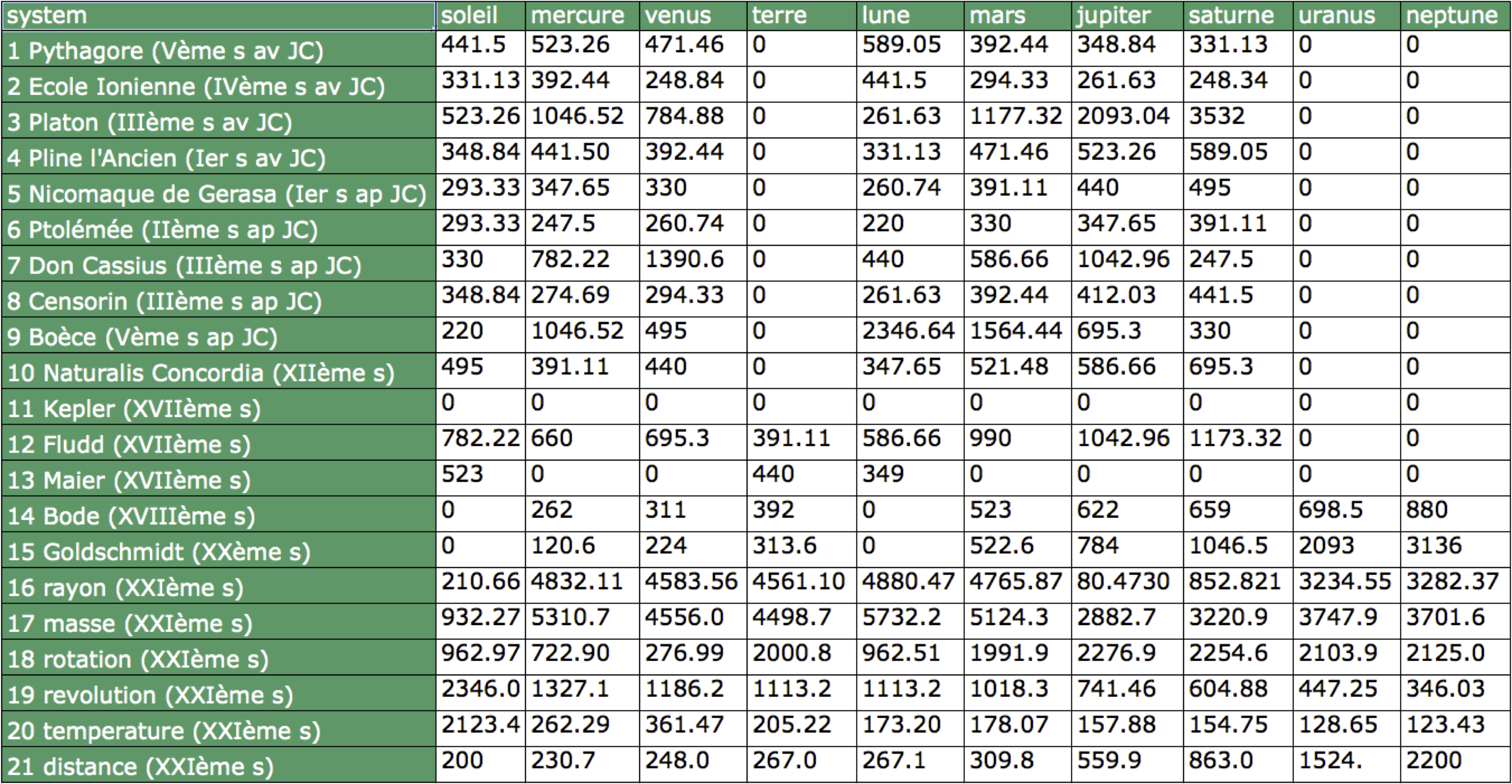Contemporary Music
- Title: Musique des sphères
- Type: Music album – 22 sound tracks of 2min each.
- Composer: Greg Beller
- World Premiere: “Formes Elémentaires – Mouvements et Géométrie de la Pensée” exhibition, Guyancourt, France, 10th of October – 1st of December 2013
- Exhibition: “Cabinet psychophonétique”, Galerie Jeune Création, 24 Rue Berthe, Paris, France, 30th of January – 29th of March 2014
- more information
Musique des sphères comes from the result of a historical study I conducted on the way composers and scientists perceived the sound or the harmony of the universe.
“Musica universalis (lit. universal music, or music of the spheres) or Harmony of the Spheres is an ancient philosophical concept that regards proportions in the movements of celestial bodies—the Sun, Moon, and planets—as a form of musica (the Medieval Latin name for music). This ‘music’ is not usually thought to be literally audible, but a harmonic and/or mathematical and/or religious concept. The idea continued to appeal to thinkers about music until the end of the Renaissance, influencing scholars of many kinds, including humanists.” [Wikipedia, 13th of November 2013]
So I browsed history to grab systems made by people that gave their findings on the Musica Universalis. Then I used these information to translate them into our nowadays understandings of what sound and solar system are, e.g. notes into frequency values and planets into orbital coordinates. I needed first to re-contextualize these data, taking account the knowledge at the time the artist wrote his system. For instance, Pline l’Ancien was considering notes into a Pythagoras’ musical scale whereas Victor Goldschmidt was writing notes into our well tempered musical scale.
After this translation, I coupled tone generators to respective celestial bodies, and tuned them according to the different systems. I used nowadays NASA’s data to simulate a solar system using Spat. I accelerated our universal time span 100000 times so as to have reasonable track lengths. For every musical systems, you are listening our solar system, as if you were embedded into a vessel that comes from the outer space to reach the sun, and then goes back to Pluto.
Here is a table that shows every systems I translated + personal add-ons made of the sonification of some physical properties (NASA data):
Interestingly, it shows that Uranus and Neptune were discovered after the XVIIth century. Time were the Earth started to be considered as a celestial body as the others (geocentric to heliocentric system). Note on Kepler’s system: Kepler defined some fluctuating values depending on orbital coordinates so there are not represented in this table.
Here are three soundtracks coming out from the album Musique des sphères.
1 Pythagore (Vème s av JC)
11 Kepler (XVIIème s)
20 Beller – temperature (XXIème s)
